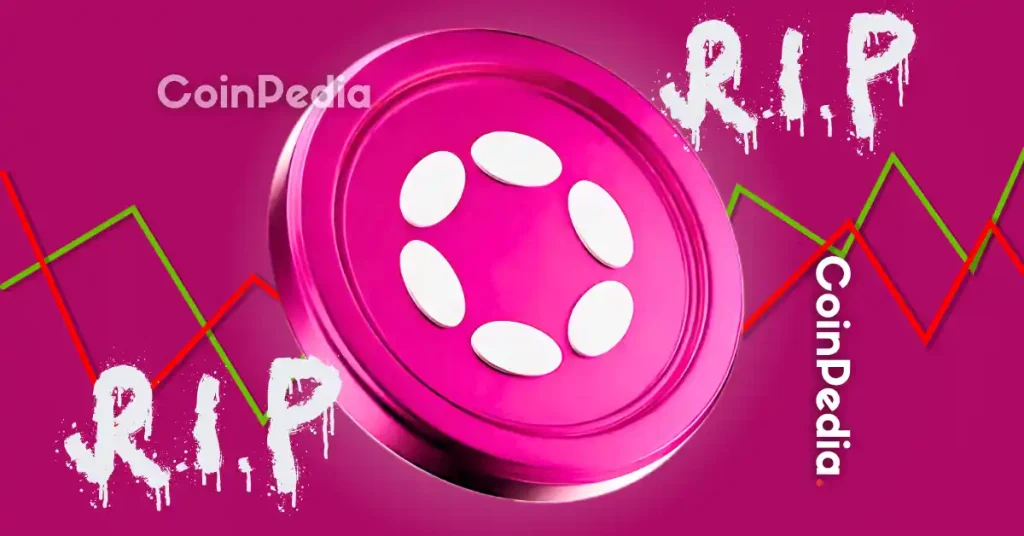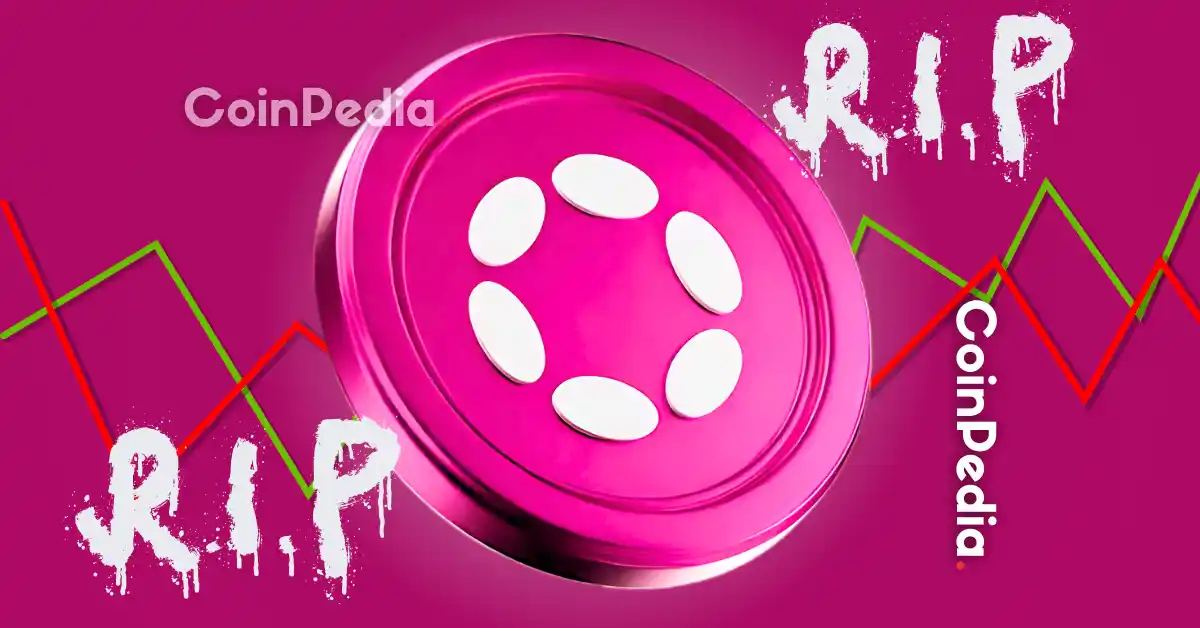
Decoding the Polkadot Potential: Is History Rhyming with Ethereum’s 2017 Ascent?
The Allure of a Second Chance: Capturing Lightning in a Bottle
The cryptocurrency market thrives on narratives, and few are as compelling as the idea of capturing the next big wave of growth. Ethereum’s 2017 bull run remains a legendary chapter in crypto history, with its price surging by thousands of percent. Today, Polkadot (DOT) is drawing comparisons to that era, sparking excitement among investors who missed out on Ethereum’s early gains. The allure of a “second chance” is powerful, but is the comparison valid?
Early Stage Potential
Ethereum in 2017 was a nascent platform, still finding its footing. Polkadot, while more mature, is often seen as being in its early stages of development and adoption. This perception fuels the belief that Polkadot could replicate Ethereum’s trajectory. However, the crypto landscape has evolved significantly since 2017. The market is more mature, competition is fiercer, and regulatory scrutiny is more intense.
Solving Blockchain Limitations
Both Ethereum and Polkadot address fundamental limitations of earlier blockchain technologies. Ethereum introduced smart contracts to overcome Bitcoin’s limited scripting capabilities. Polkadot, on the other hand, aims to solve scalability and interoperability issues that have hindered widespread blockchain adoption. This shared mission of innovation and improvement is a key factor in the comparison.
Community and Developer Activity
A vibrant community and active developer ecosystem are crucial for long-term success in the crypto space. Both Ethereum and Polkadot boast these qualities. Ethereum’s developer community has grown exponentially, and Polkadot is attracting a growing number of developers with its unique architecture and interoperability features.
Unpacking Polkadot: What Makes it Tick?
To understand the validity of the Ethereum comparison, it’s essential to grasp the fundamentals of Polkadot’s technology and its value proposition.
Scalability
Polkadot’s architecture is designed for scalability. Unlike Ethereum, which operates as a single, monolithic blockchain, Polkadot consists of a central “Relay Chain” that provides security and coordination, and multiple parallel chains called “parachains” that can be customized for specific use cases. This sharded, multi-chain network allows Polkadot to achieve significantly higher transaction throughput than single-chain blockchains like Ethereum.
Interoperability
Interoperability is one of Polkadot’s standout features. It enables seamless communication and value transfer between different blockchains, fostering a more connected and collaborative ecosystem. This is a significant advantage in a blockchain landscape that is often fragmented and siloed.
Customization
Parachains can be tailored to specific applications and industries, allowing developers to optimize their blockchains for performance and functionality. This customization is a key differentiator for Polkadot, as it allows for a wide range of use cases and applications.
Governance
Polkadot has a sophisticated on-chain governance system that allows DOT holders to participate in decision-making processes. This ensures the network evolves in a decentralized and democratic manner, a feature that resonates with the crypto community’s emphasis on decentralization.
The Catalysts Behind the Current Rally: Riding the Wave
Several factors appear to be contributing to Polkadot’s recent price surge:
Breaking the Downtrend
Polkadot had been experiencing a period of price consolidation and downward pressure. Breaking free from this downtrend has instilled confidence in investors and triggered renewed buying interest. This breakout is a classic example of how market psychology can drive price movements.
Increased DeFi Activity
The growth of decentralized finance (DeFi) applications on Polkadot has been a significant driver of demand for DOT. As more users engage with DeFi protocols on the network, the utility and value of DOT increase. This is a positive feedback loop that can drive further adoption and price appreciation.
Stablecoin Integration
The integration of stablecoins into the Polkadot ecosystem has further fueled DeFi activity and facilitated smoother transactions. Stablecoins provide a stable medium of exchange and store of value, which is crucial for the growth of DeFi applications.
Liquidity Boost
The launch of liquidity pools, such as the vDOT/ETH pool, has enhanced the accessibility and usability of DOT. These liquidity pools provide a mechanism for users to trade DOT with other assets, increasing the token’s liquidity and attractiveness to investors.
Overall Market Sentiment
The broader cryptocurrency market has experienced a positive shift in sentiment, with Bitcoin and Ethereum leading the way. This rising tide has lifted many altcoins, including Polkadot. Market sentiment is a powerful force in the crypto space, and positive sentiment can drive significant price movements.
Navigating the Headwinds: Challenges and Considerations
Despite the positive momentum, Polkadot faces several challenges that could hinder its long-term success:
Competition
The blockchain landscape is becoming increasingly crowded, with numerous platforms vying for dominance. Polkadot faces stiff competition from Ethereum, Cardano, and other Layer-1 blockchains. Standing out in this competitive landscape will be a significant challenge.
Complexity
Polkadot’s technology is complex, which can make it challenging for developers to build and deploy applications on the network. Simplifying the development process is crucial for attracting more developers to the ecosystem. This complexity is a double-edged sword, as it offers advanced features but also presents a barrier to entry.
Parachain Auctions
The process of securing a parachain slot through auctions can be expensive and competitive, potentially limiting the number of projects that can join the Polkadot network. This could hinder the growth and diversity of the ecosystem.
Adoption Rate
While Polkadot has made significant strides in attracting developers and users, its adoption rate still lags behind Ethereum. Increasing awareness and driving adoption are essential for realizing Polkadot’s full potential. This is a critical challenge, as adoption is a key driver of network effects and long-term success.
Regulatory Uncertainty
The regulatory landscape surrounding cryptocurrencies remains uncertain, which could impact the adoption and growth of Polkadot and other blockchain projects. Regulatory clarity is crucial for the long-term success of any blockchain project.
A Realistic Outlook: Tempering Expectations with Data
While the comparison to Ethereum’s 2017 rally is compelling, it’s crucial to maintain a realistic perspective. The crypto market is inherently volatile and unpredictable, and there are no guarantees of future success.
Market Maturity
The cryptocurrency market is far more mature and sophisticated than it was in 2017. Institutional investors are now actively involved, and the market is subject to greater scrutiny and regulation. This maturity brings both opportunities and challenges, as the market is more complex and competitive.
Increased Competition
The blockchain landscape is significantly more competitive than it was in 2017. Polkadot faces a much larger and more established pool of competitors. Standing out in this competitive landscape will require a strong value proposition and effective execution.
Economic Factors
Macroeconomic conditions, such as inflation and interest rates, can significantly impact the cryptocurrency market. These factors were less prominent in 2017, but today they play a crucial role in shaping market dynamics. Understanding and navigating these macroeconomic factors will be essential for Polkadot’s success.
Conclusion: Charting a Course for the Future
Polkadot’s recent rally and the comparisons to Ethereum’s 2017 surge are undeniably exciting. The project boasts a compelling technology, a vibrant community, and a growing ecosystem. However, it’s crucial to approach this narrative with a balanced perspective, acknowledging the challenges and uncertainties that lie ahead.
Ultimately, Polkadot’s success will depend on its ability to overcome these challenges, drive adoption, and deliver on its promise of a more scalable, interoperable, and decentralized future. Whether it mirrors Ethereum’s exponential growth remains to be seen, but Polkadot has undoubtedly positioned itself as a contender in the ever-evolving blockchain arena. The road ahead is paved with both opportunity and risk; navigating it successfully will require vision, execution, and a healthy dose of realism.





